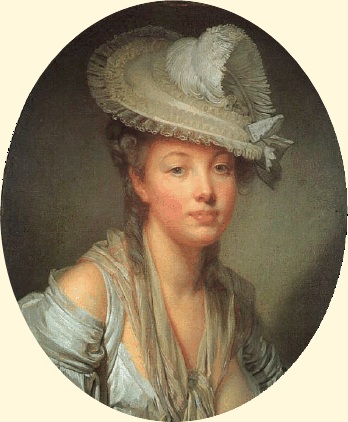Marie-Catherine Le Jumel de Barneville, Baroness d’Aulnoy was a French writer known for her fairy tales. Born in 1650, Madame d’Aulnoy wrote several works of literature over her career, including historical and religious novels and memoirs. Nonetheless, d’Aulnoy is most recognized for her
Les Contes des Fées, which created the term now used for the genre, fairy tales. While the audience fairytales attract today may be children, d’Aulnoy wrote her fanciful stories for adults. Written in a conversational format, d’Aulnoy would recite her fairytales at her literary salon in Paris. Although she lived a controversial life filled with an unsuccessful marriage and several love affairs, d’Aulnoy used her fairytales to express her struggles in a context that provided her acceptance among her community. (“Madame D’Aulnoy”)
Inspiration for Madame d’Aulnoy’s fairytales began at an early age. In 1666, when she was only sixteen, d’Aulnoy was forced into an arranged marriage with a man that was thirty years older than her. However the controversy in d’Aulnoy’s life did not end with the arranged marriage. D’Aulnoy’s husband, François de la Motte, Baron d'Aulnoy, was a freethinker and had a reputation for gambling excessively. (“Madame D’Aulnoy”) Also, in 1669 Baron d’Aulnoy was accused of treason and was sentenced to jail in the Bastille for several months. Once he was released from the Bastille, the couple separated. (Stedman 14) Madame d’Aulnoy later had three children through affairs with unknown men causing her to remove herself from the social scene in Paris for twenty years. Consequently, d’Aulnoy created Les Contes des Fées in 1697 in order to gain back the acceptance of her society. (“Madame D’Aulnoy”)
Madame d’Aulnoy’s popularity quickly began to rise after the publishing of her two collections of fairytales, Les Contes des Fées and Contes nouveaux ou les Fées à la mode. In Les Contes des Fées, d’Aulnoy’s main characters include clever and unconventional heroines. The use of the heroine in d’Aulnoy’s first collection of fairytales helps to portray the importance of women independence and thus created approval from her community towards her separation with the Baron d’Aulnoy. In Contes nouveaux ou les Fées à la mode, d’Aulnoy describes a man’s scheming efforts to secure a marriage contract with a local baron’s daughter. This story directly relates to d’Aulnoy’s own experience with arranged marriages. She expresses her displeasure with forced matrimonies, allowing others in her society to again be more understanding toward her scandalous actions she committed earlier in her life. Therefore, Madame d’Aulnoy shared her eccentric views and experiences through her fairytales, which in the end let her be accepted back into her society. (Stedman 16)
Overall, Mary-Catherine d’Aulnoy was a strong, independent woman who had great success despite her difficulties earlier on in life. With the fame of her fairytales, d’Aulnoy introduced a genre to the French public that invoked thought towards the conventional beliefs of the community at the time. It is through her collections of stories that d’Aulnoy was able to overcome her past and rise from oppression. Consequently, Madame d’Aulnoy’s powerful messages amongst her fairytales continue to support her popularity today.
Works Cited
"Madame D'Aulnoy." Wikipedia, the Free Encyclopedia. Web. 21 Feb. 2011.
<http://en.wikipedia.org/wiki/Madame_d'Aulnoy>.
Stedman, Allison. Seventeenth Century French Writers. Ed. Francoise Jaouen. Dictionary of Literary Biography Vol. 268. Detroit: Gale, 2003. p12-18.

 Overtime, fairytales have evolved from frightening tales with morals to love stories with happy endings. The tales have changed to please modern audiences. However, the idea of "Prince Charming" has also been altered through time. In the original versions, the male figures were often warned against, suggesting they were dangerous to women. As time passed and Disney started to alter the original tales, the men started to be expressed as perfect, Damsel-in-Distress-Rescuing Princes. However, more recently, the villain has become the love interest to the female characters. In Angela Carter's "The Company of Wolves," Little Red Riding Hood expresses desire for the dangerous wolf. Also, in Twilight, Bella Swan falls in love with a vampire, Edward Cullen. This idea of forbidden love, reminds me of a concept one of my high school English teachers described as "BBS" or "Bad Boy Syndrome." While in the past, women often searched for that "perfect" prince-like man, today more and more, especially with younger woman, the "Bad Boy Syndrome" seems to have a hold on their search for love. Unfortunately, the Bad Boys hardly seem to last and certainly never turn into husbands. So what is more disappointing, being unsuccessful in the search for "Prince Charming" or falling in love with a wolf who could rip you to shreds at any moment?
Overtime, fairytales have evolved from frightening tales with morals to love stories with happy endings. The tales have changed to please modern audiences. However, the idea of "Prince Charming" has also been altered through time. In the original versions, the male figures were often warned against, suggesting they were dangerous to women. As time passed and Disney started to alter the original tales, the men started to be expressed as perfect, Damsel-in-Distress-Rescuing Princes. However, more recently, the villain has become the love interest to the female characters. In Angela Carter's "The Company of Wolves," Little Red Riding Hood expresses desire for the dangerous wolf. Also, in Twilight, Bella Swan falls in love with a vampire, Edward Cullen. This idea of forbidden love, reminds me of a concept one of my high school English teachers described as "BBS" or "Bad Boy Syndrome." While in the past, women often searched for that "perfect" prince-like man, today more and more, especially with younger woman, the "Bad Boy Syndrome" seems to have a hold on their search for love. Unfortunately, the Bad Boys hardly seem to last and certainly never turn into husbands. So what is more disappointing, being unsuccessful in the search for "Prince Charming" or falling in love with a wolf who could rip you to shreds at any moment?


